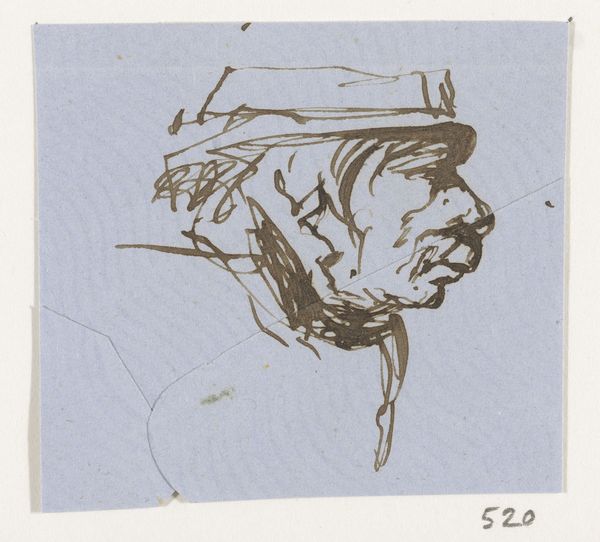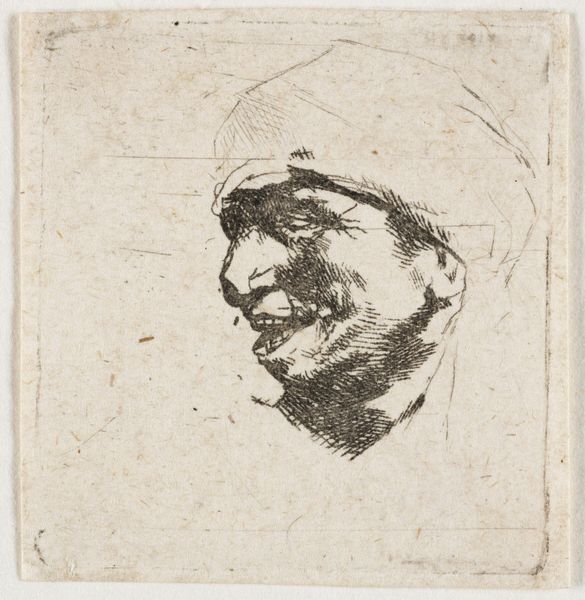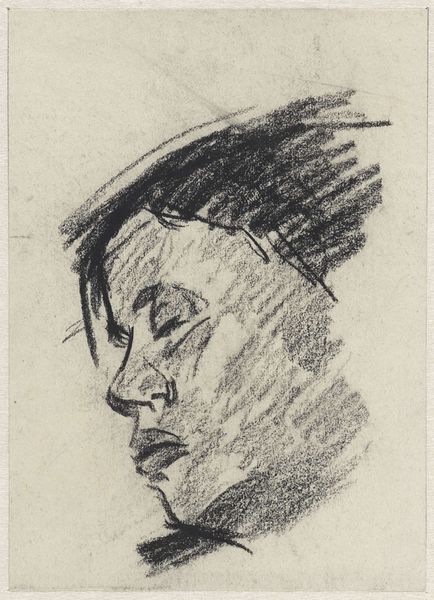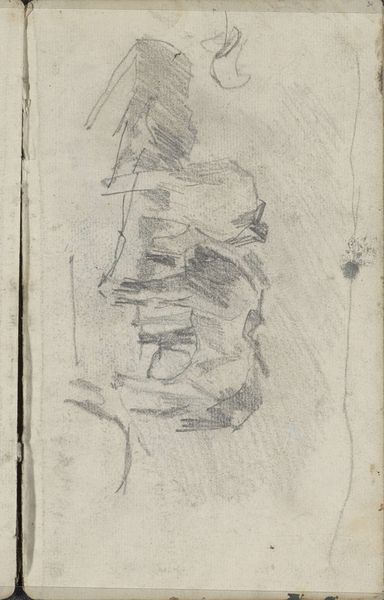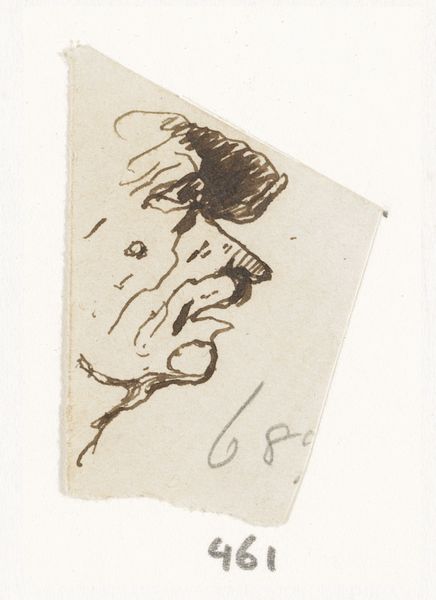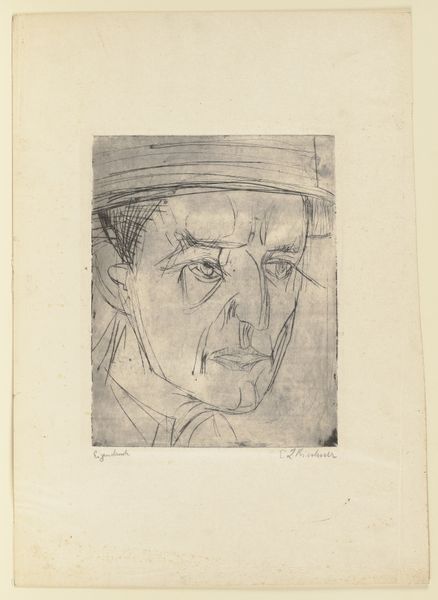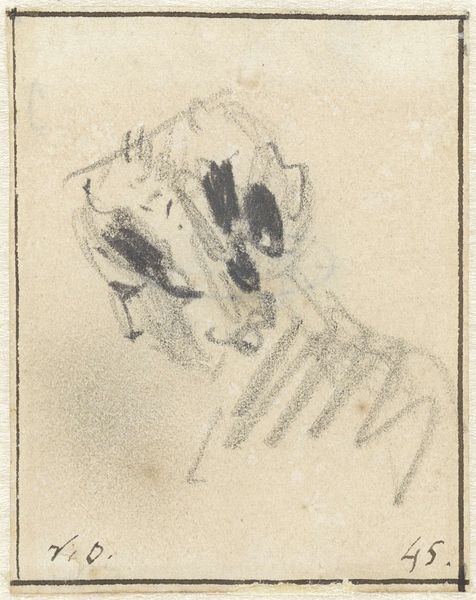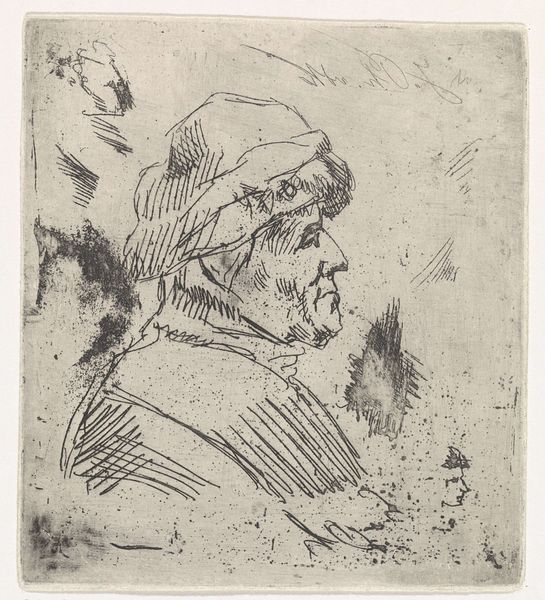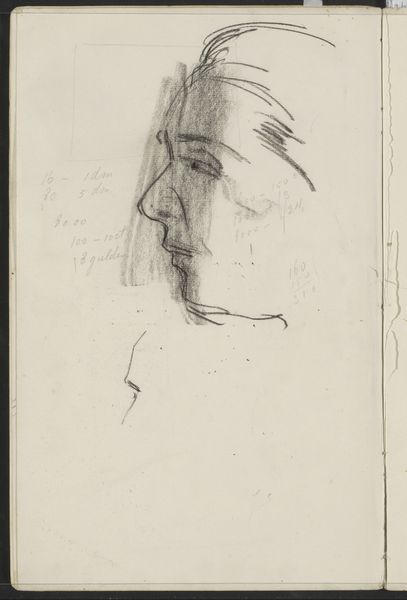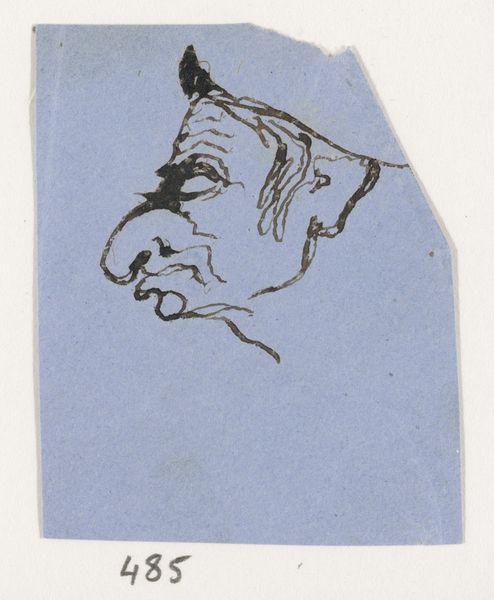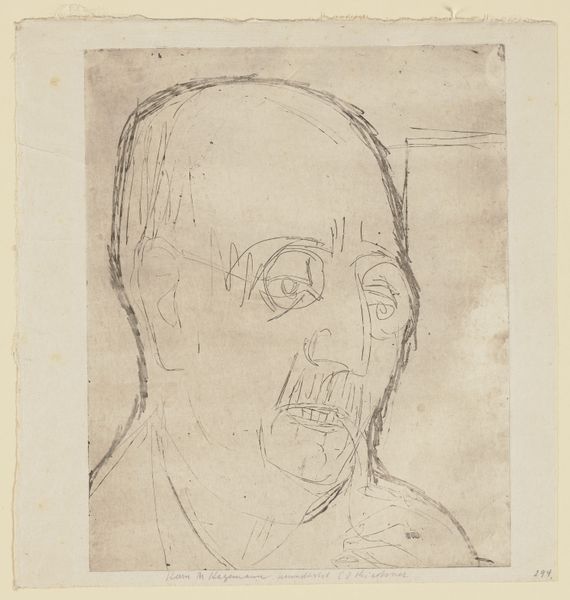
drawing, ink
#
portrait
#
drawing
#
baroque
#
figuration
#
ink
Dimensions: 87 mm (height) x 91 mm (width) (bladmaal)
Curator: Adriaen Brouwer’s “Head of a Sneering Knave,” made sometime between 1619 and 1638, uses rapid ink strokes to capture a face contorted in what seems like a sneer or shout. Editor: My first impression? Pure raw emotion. There's an urgency in those lines, a primal scream trying to escape. It feels almost punk, centuries ahead of its time. Curator: Absolutely. Brouwer’s figures often represent the working classes in moments of intense feeling, providing a glimpse into the lives of those often overlooked. This piece invites a critical look at Baroque societal structures and their power dynamics. Editor: The simplicity is striking. It challenges conventional ideas of portraiture. Who gets represented, and how? Brouwer's focus on this seemingly insignificant, perhaps even ‘ugly’, figure pushes against the glorification of the elite in art. It brings forward themes of marginalization and class difference that continue to echo through time. Curator: And let's think about the probable original viewing context for the work. Brouwer’s images were often traded in networks of artists, collectors, and taverns. It’s possible that this piece challenged existing norms in its time through informal exchanges. Editor: I think there's something universal in the sneer itself. It reflects human struggles against hardship, against injustice. The ink medium reinforces this immediacy, the fragility of both existence and emotional display. There's a queer and confrontational sensibility here for sure. Curator: His decision to capture expressions of people from daily life was rather unprecedented at the time. It really opens an important lens to view life as it unfolded at this point in time. Editor: The directness of this expression, though almost 400 years old, connects with audiences on a deeply personal level, sparking dialogue about representation and identity, especially for those who find themselves outside conventional artistic canons. Curator: Yes. A fascinating example of how an image from the past can illuminate social realities even now. Editor: Definitely prompts reflection, especially considering Brouwer's choice to portray a marginalized figure front and center. It is a brave declaration, I feel.
Comments
No comments
Be the first to comment and join the conversation on the ultimate creative platform.


